03 Mar IRS Provides Additional Details on Premium Payment Arrangements
Source: United Benefit Advisors, LLC
The regulatory agencies have recently issued guidance that may affect employers that have been reimbursing premiums for individual health coverage or Medicare Part B, Part D or Medigap premiums for active employees. In addition, new rules were issued for single benefit supplemental plans, which may affect minimum essential coverage programs that include “wrap” benefits for prescription drug coverage or other essential health benefits. Finally, the IRS has released a request for comments on how it should administer certain parts of the “Cadillac” excise tax.
On February 18, 2015, the Internal Revenue Service (IRS) issued Notice 2015-17. This Notice addresses employer payment or reimbursement of individual premiums in light of the requirements of the Patient Protection and Affordable Care Act (PPACA). For many years, employers were permitted to reimburse premiums paid for individual coverage on a tax-favored basis, and many smaller employers adopted this type of an arrangement instead of sponsoring a group health plan. However, these “employer payment plans” frequently are unable to meet all of the PPACA requirements that took effect in 2014, and in a series of Notices and frequently asked questions (FAQs) the IRS has made it clear that an employer may not either directly pay premiums for individual policies or reimburse employees for individual premiums on either an after-tax or pre-tax basis. This is the case whether payment or reimbursement is done through a health reimbursement arrangement (HRA), a Section 125 plan, a Section 105 plan, or another mechanism.
The new Notice reiterates this position. It also clearly states that an employer may increase an employee’s taxable wages to help cover the cost of health coverage if it chooses not to offer coverage, but the employer may not require an employee to purchase health insurance or certify that he has coverage in order to receive the bonus or other wage increase. If the bonus or increase is specifically designated as a premium reimbursement or it must be used for premiums, this would be an impermissible employer payment plan. Under these new rules, if the employer reimburses or directly pays premiums for individual coverage, on either a pre-tax or after-tax basis, it has created a noncompliant group health plan and the $100 per day per employee penalty would apply. Reimbursement and payment of group health premiums is still allowed.
Grace period for employer payment plans sponsored by small employers
The new Notice acknowledges that this new rule may be difficult for smaller employers to adjust to, and therefore the Notice provides that employers that had 50 or fewer full-time or full-time equivalent employees for 2014 will not be penalized for non-compliant premium payment arrangements that were in effect during 2014. Employers that have 50 or fewer full-time or full-time equivalent employees for 2015 will not be subject to penalties for January 1, 2015, through June 30, 2015. In addition to waiving the penalty, these smaller employers will not be required to file the Form 8928 on which non-compliance is expected to be self-reported. (Employer size is determined the same way it is under the employer-shared responsibility rule – the number of full-time and full-time equivalent employees is averaged over the preceding calendar year, although the employer may choose to average lives over a six-consecutive month period, rather than over the whole year if it wishes to. The calendar year is used even for non-calendar year plans.) This grace period is limited to HRAs that simply reimburse individual premiums – non-integrated HRAs that reimburse other types of expenses remain impermissible and subject to excise taxes as of the start of the 2014 plan year.
Rules for reimbursing Medicare premiums
The Notice also states that employer payment or reimbursement of Medicare Part B or D premiums for active employees will be considered a non-compliant group health plan, subject to the $100 per employee per day penalties, unless the employer payment plan is integrated with a group health plan. A reimbursement program will be considered integrated if:
- The employer offered a group health plan to the employee that offers minimum value (a plan with at least 60% actuarial value that covers physician and hospital care), even if the Medicare-eligible employee declined it;
- The employee who receives premium payments is actually enrolled in Medicare Parts A and B;
- The program provides that premium payments are only available to employees who are enrolled in Medicare Part A and either Part B or D; and
- Premium payment or reimbursement is only for Medicare Part B or D premiums and excepted benefits, including Medigap premiums.
This rule applies to employers of all sizes. Employers need to remember that Medicare Secondary Payer rules prohibit an employer with 20 or more employees from in any way incentivizing an active employee to elect Medicare instead of the group health plan. Reimbursing premiums is generally considered an impermissible inducement, and therefore it is unlikely that as a practical matter employers with 20 or more employees are able to reimburse an active employee for Medicare or Medigap premiums. A retiree-only plan is not subject to these PPACA requirements, and therefore reimbursing Medicare premiums for retirees generally is allowed.
Although these Medicare integration requirements apply to employers of all sizes, small employers (those with fewer than 50 employees) that have been reimbursing Medicare premiums for active employees in a way that does not meet these requirements have a grace period until June 30, 2015, during which no penalties will apply.
Rules for reimbursing TRICARE expenses
The Notice also says that employers may reimburse expenses and premiums for employees covered by TRICARE through a health reimbursement arrangement only if the HRA is integrated with a group health plan. The integration requirements are similar to those that apply to Medicare (that is, group health coverage must be available, reimbursement or payment must be limited to employees enrolled in TRICARE, and reimbursement may only be for cost-sharing and excepted benefits, including TRICARE premiums. Prohibitions on incentivizing TRICARE-eligible employees to enroll in TRICARE that are similar to the Medicare Secondary Payer rules continue to apply.)
Rules for reimbursing premiums for 2-percent shareholders
Questions have been raised about how the employer payment plan rules apply to 2-percent shareholders in S corporations. S corporation shareholders have specific requirements for deducting insurance premiums, under which the reimbursed premium is included in the 2-percent shareholder’s income, but is deductible by the shareholder. The Notice provides that, until further notice and at least through 2015, an S corporation may pay for, or reimburse, individual premiums for employees who are 2-percent shareholders without causing the employer to be treated as a sponsor of a non-compliant group health plan to which the $100 per employee per day penalty applies. However, an S corporation cannot use a premium payment arrangement of this type for employees who are not 2-percent shareholders.
The Notice also clarifies that when determining if a plan covers more than one employee (which is what brings the PPACA requirements into play), if only one person is covered as the employee (and the employee’s spouse is covered as a dependent spouse and not as an employee), the plan is considered to cover only one employee. However, if an employer has multiple premium payment arrangements, it will be considered to have a single plan with multiple participants, even though one arrangement covers a 2-percent shareholder and the other covers a non-shareholder.
The prior guidance on employer payment plans is here:January of 2013, September of 2013, November of 2014, and December of 2014.
AGENCIES PROVIDE GUIDANCE ON SINGLE BENEFIT PRODUCTS AND EXCEPTED BENEFITS
On February 13, 2015, the regulatory agencies issued an FAQ on whether supplemental health insurance coverage that provides additional categories of benefits may qualify as supplemental excepted benefits. Many provisions of PPACA do not apply to excepted health benefits. Supplemental excepted benefits are those that are provided under a separate policy, certificate or contract of insurance and are Medicare supplement insurance (Medigap), Tricare supplemental programs, or “similar” supplemental coverage.
Supplemental excepted benefits
Generally, to determine if a similar supplemental coverage qualifies as an excepted benefit it must meet four criteria: (1) the policy, certificate, or contract of insurance must be issued by an entity that does not provide the primary coverage under the plan; (2) the supplemental policy or certificate, or contract of insurance must be must be specifically designed to fill gaps in primary coverage (such as coinsurance or deductibles); (3) the cost of the supplemental coverage must not exceed 15% of the cost of primary coverage; and (4) supplemental coverage sold in the group insurance market must not differentiate among individuals in eligibility, benefits, or premiums based upon any health factor of the individuals, or their dependents.
Single benefit coverage
With these criteria in mind, the FAQ addressed whether or not health insurance issuers selling supplemental products providing a single benefit can characterize the single product as an excepted benefit and thereby avoid many PPACA requirements. The agency did not provide a specific rule, but said it intends to propose regulations clarifying that a product that does not fill in cost-sharing such as deductibles or coinsurance under the primary plan could still be considered to be designed to “fill gaps” in primary coverage, and therefore excepted, but only if it does not provide coverage for a service or supply that is an essential health benefit (EHB) in the state where it is marketed. This means, for example, that a product that is being marketed as minimum essential coverage with a prescription drug supplemental benefit would not be allowed. Until these regulations are proposed and finalized, the IRS will not impose penalties on supplemental coverage which:
- Provides coverage of additional categories of benefits that are not EHB in the applicable state;
- Complies with the four criteria mentioned above and other applicable regulatory requirements; and
- Has been filed and approved with the state, as required by state law.
Employers that have arrangements that may not satisfy this FAQ may wish to contact the vendor providing the supplemental benefit to determine how it plans to remedy the situation.
IRS REQUESTS INPUT ON CADILLAC TAX
Beginning in 2018, plans that provide coverage that exceeds a threshold will owe an excise tax that is frequently referred to as the “Cadillac tax.” The threshold generally will be $10,200 for single benefits and $27,500 for benefits provided to an employee, retiree or member of a bargaining unit and dependents. The tax is 40% of the value of coverage provided over that threshold level.
The IRS is beginning the process of writing regulations that will provide details on how this tax will operate. On February 23, 2015, the IRS issued Notice 2015-16, which provides some information on the types of benefits that will count toward the tax. It has requested input on how best to value some of these benefits. It also said in the Notice that as part of the process it plans to finally provide guidance on how Consolidated Omnibus Budget Reconciliation Act (COBRA) premiums should be calculated.
The types of coverage likely to be included in the taxation process include:
- Employer or employee contributions to health flexible spending accounts;
- Employer or pre-tax employee contributions to Archer medical savings accounts;
- Employer or pre-tax employee contributions to health savings accounts;
- Plans maintained for civilian employees by the federal, state, or local governments;
- On-site medical clinics (except for clinics that provide only de minimis medical care, such as first aid, immunizations, nonprescription pain killers, or work injuries to current employees without charge);
- Retiree coverage;
- Multiemployer plan coverage;
- Executive physical programs;
- Health reimbursement arrangements; and
- Specified disease or fixed indemnity coverage if the cost of coverage is excluded or deducted from taxes.
Likely not to be included are:
- Other forms of excepted benefit coverage such as accident or disability income insurance, workers’ compensation, auto-medical payment coverage, or liability coverage;
- Long-term care insurance;
- Dental and vision insurance covered by a separate policy (including both insured and self-insured coverage);
- Specified disease or indemnity insurance when payment is taxable;
- Employee after-tax contributions to Archer MSAs and to HSAs; and
- Employee assistance programs that provided limited medical benefits.
The IRS notes that valuing an HRA can be difficult. It is considering valuing HRAs based either on the amount made newly available to an employee under an HRA each year, or on the total amount spent through HRAs each year by employees divided by the number of covered employees.
Comments are due by May 15, 2015. The IRS also said it expects to request comments on other aspects of the tax. This deliberate approach means that it is not likely that proposed, much less final, regulations will be released in the near future.
Download the “Employment Payment Plan Grace Period” PPACA Report here.






